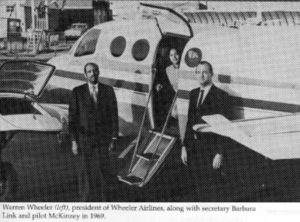By Marlee Archer
While many people are familiar with Bessie Coleman and her importance of becoming the first African American female pilot in 1922, there are many Black women who have made strides in aviation since then.
One such pioneer is Jill E. Brown-Hiltz, who set precedents specifically in the commercial airline industry. But before becoming the first Black female to pilot a major U.S. commercial carrier in 1978, Brown-Hiltz had to overcome barriers of difficulty to prove herself worthy in a field dominated by white males.
A Baltimore native, Brown’s entire family took an interest in flying by the time she was 17.
“Daddy was tired of getting speeding tickets,” she told Ebony in a 1975. The family eventually bought its own plane and Brown began flying her friends on what she dubbed Browns’ United Airline, the interview states.
She eventually became an economics teacher, all while continuing to master her skills in the sky. It was in 1974 that she made history as the first African American woman accepted into the United States Naval pilot training program. With only a short six month stint with the Navy—she was dishonorably discharged, and cites in the interview that her frequency of expressing herself was not agreeable with the military— she took her next essential step toward her eventual fate as a black aviation pioneer.
According to the North Carolina Museum of History, after leaving the Navy, she joined the first Black-owned and operated airline, Wheeler Airlines. Starting from the bottom of the heap, Brown started with Wheeler as a ticket counter. She eventually proved herself and worked her way up to flying as a copilot, logging more than 800 flight hours with the airline— enough hours to qualify for a commercial airline. And in 1978, Brown made history when she was hired by Texas International Airport and became the first African American female to fly with a major U.S. commercial airline.
However, the number of Black female pilots in the commercial airline industry has not increased much in the 37 years since Brown defied the odds. James E. Sutton III explored this lack of diversity in commercial airlines in his 2008 dissertation, “African American Women Pilots’ Perceptions of Barriers in Flight Training and Strategies to Enhance Their Presence.” According to Sutton, a 20,004 page report by the Federal Aviation Administration revealed that women only make up about 3.5 percent of commercial airline pilots.
Minority aviation groups have conducted studies that indicate Black females only make up .01 percent of that total, which roughly translates to only 50 Black female pilots in the entire commercial airline industry.




